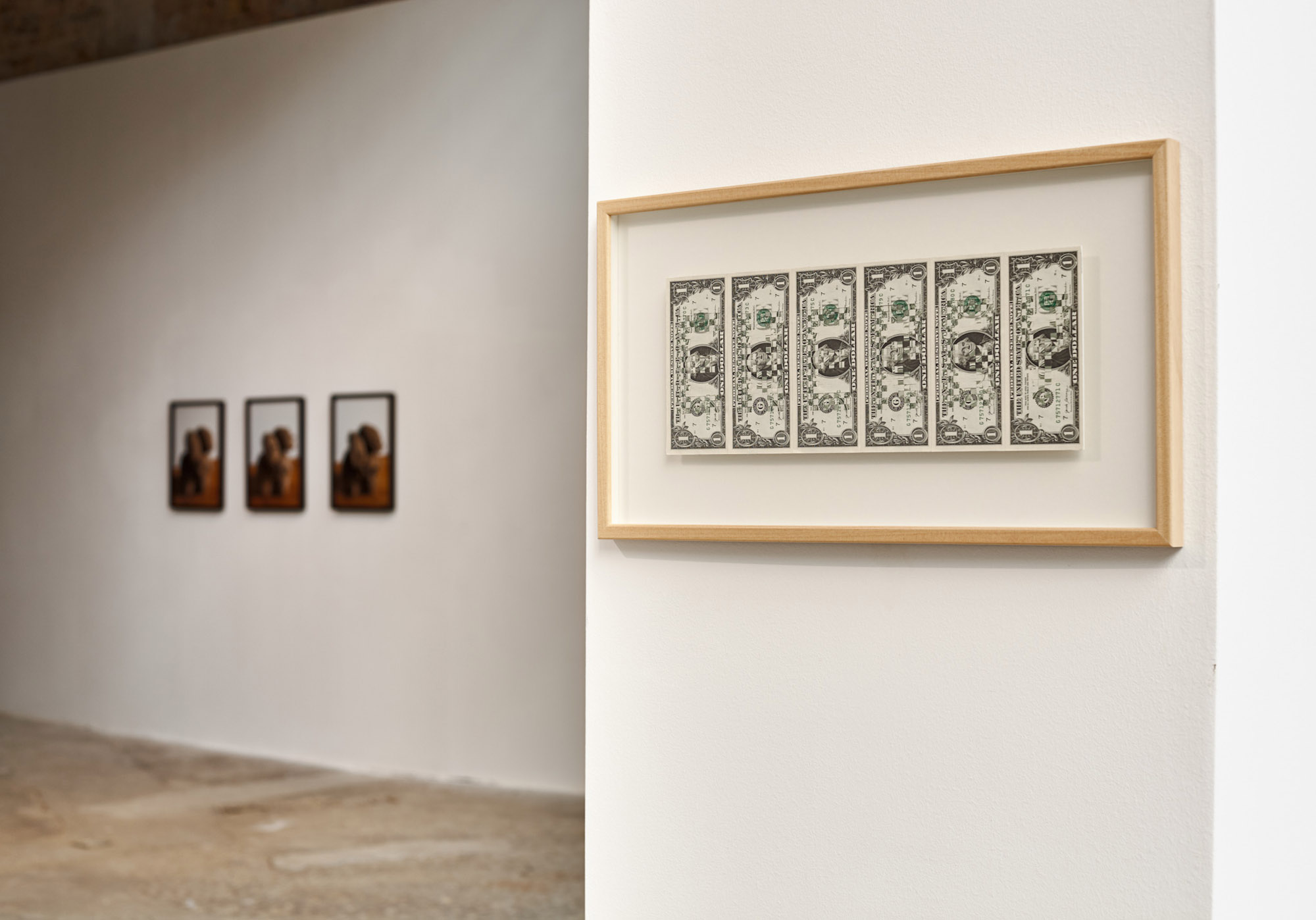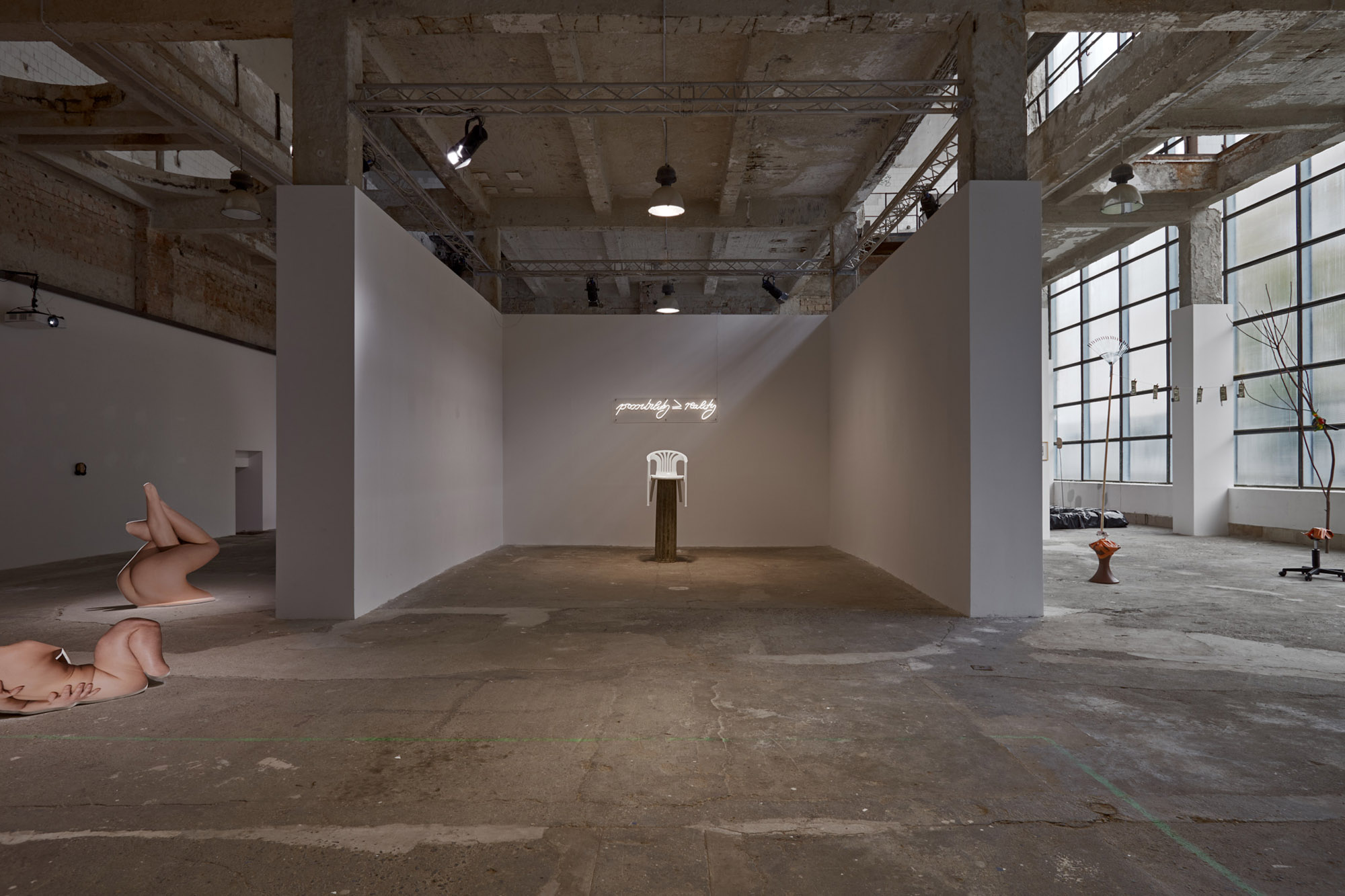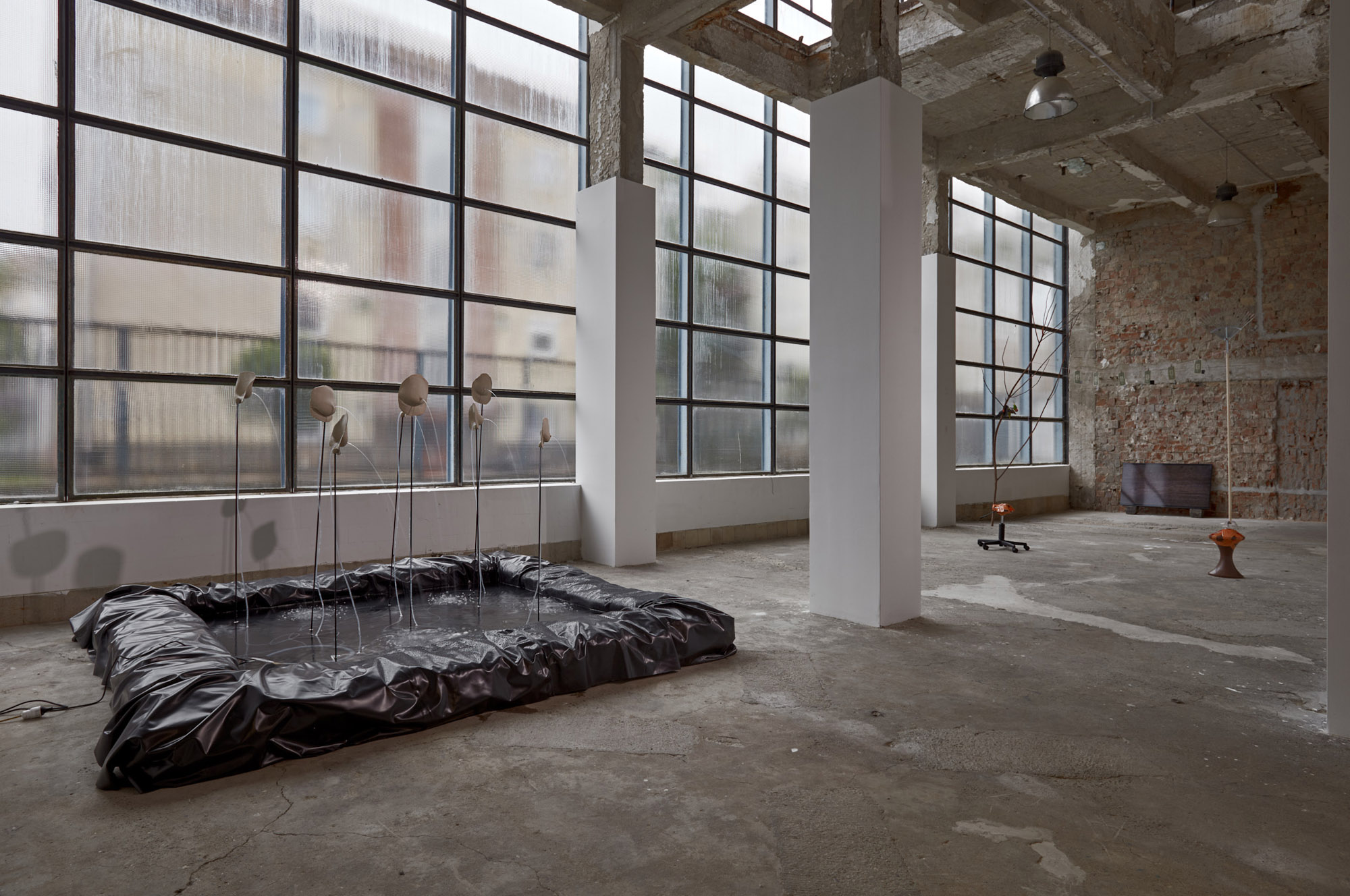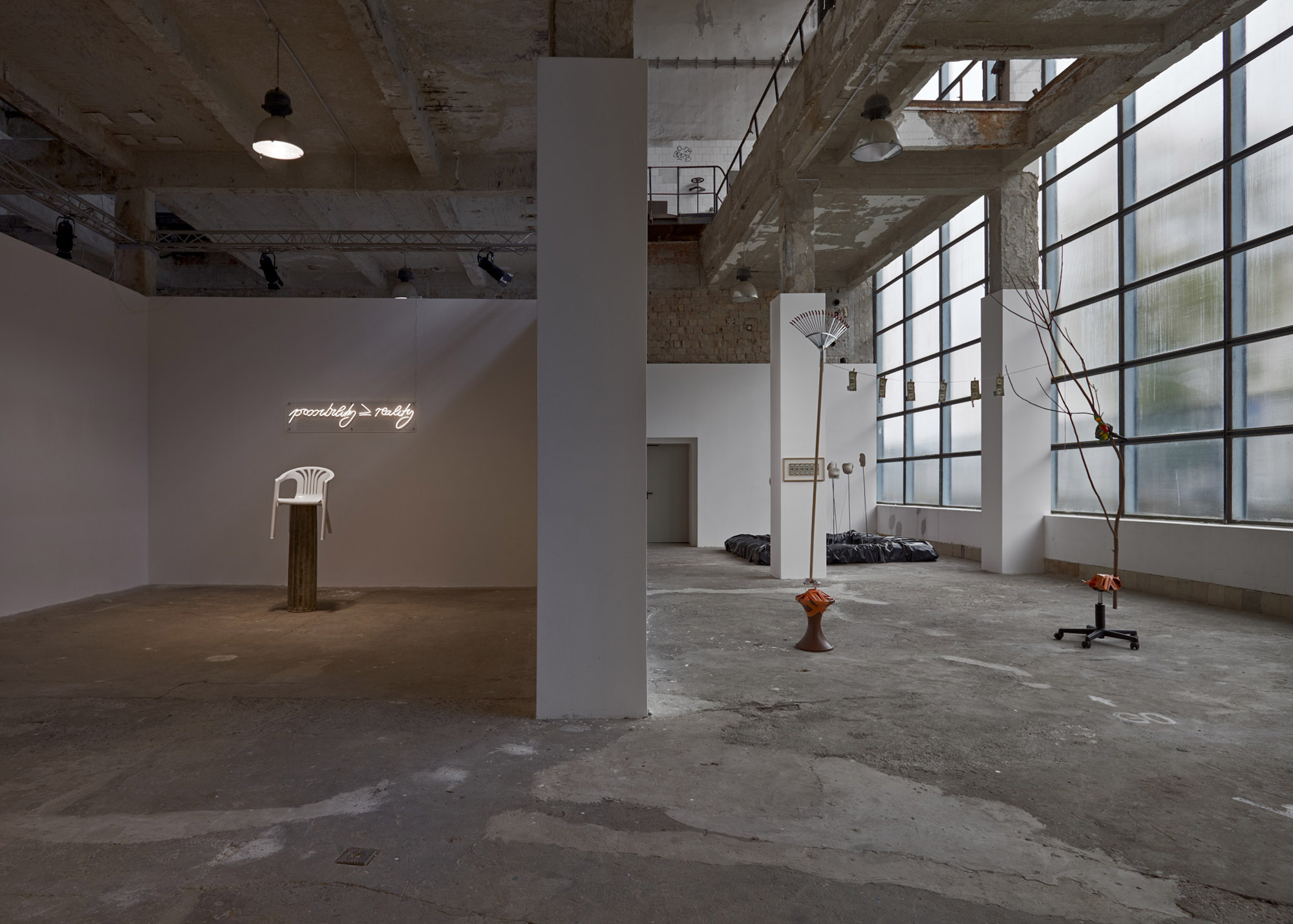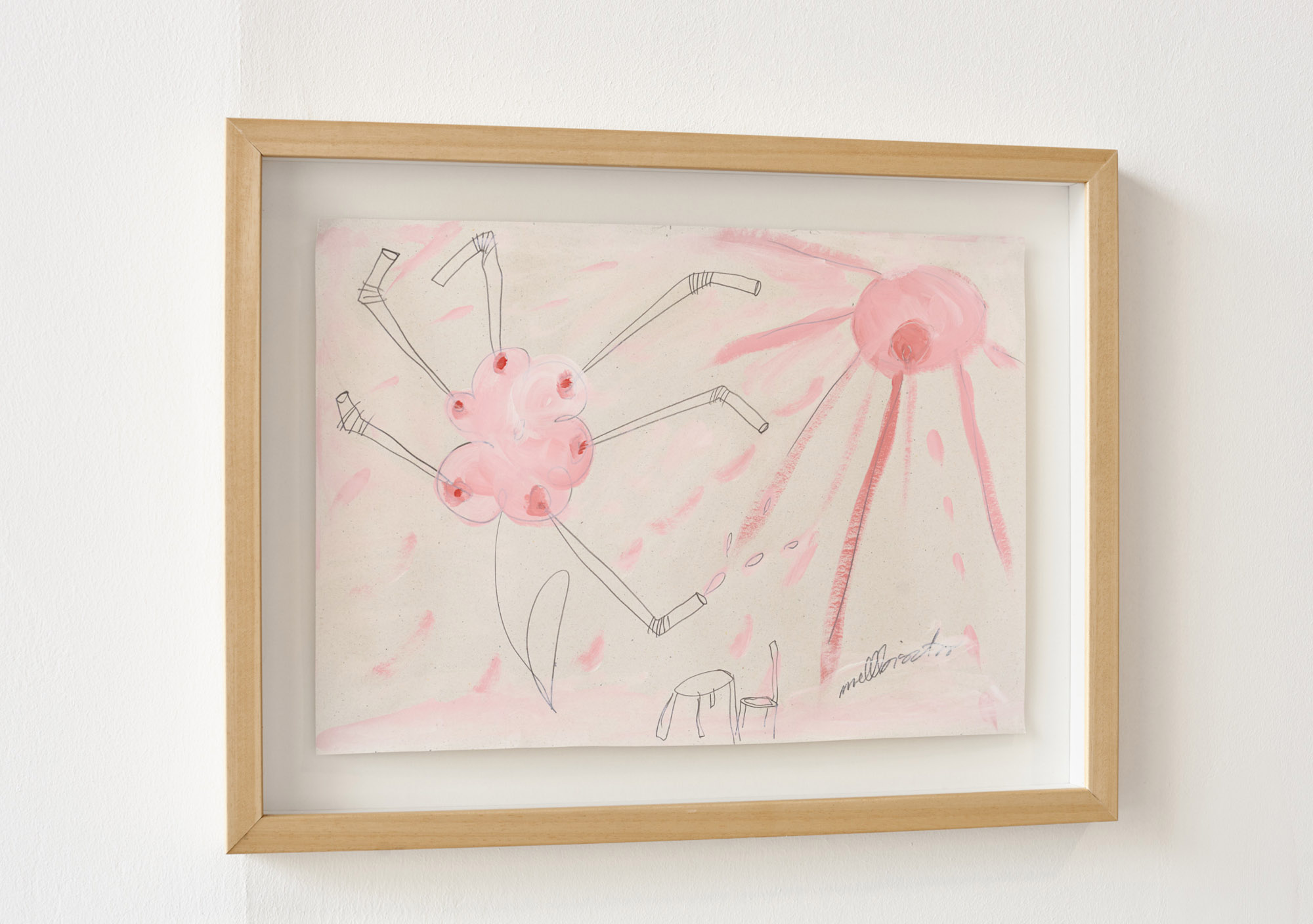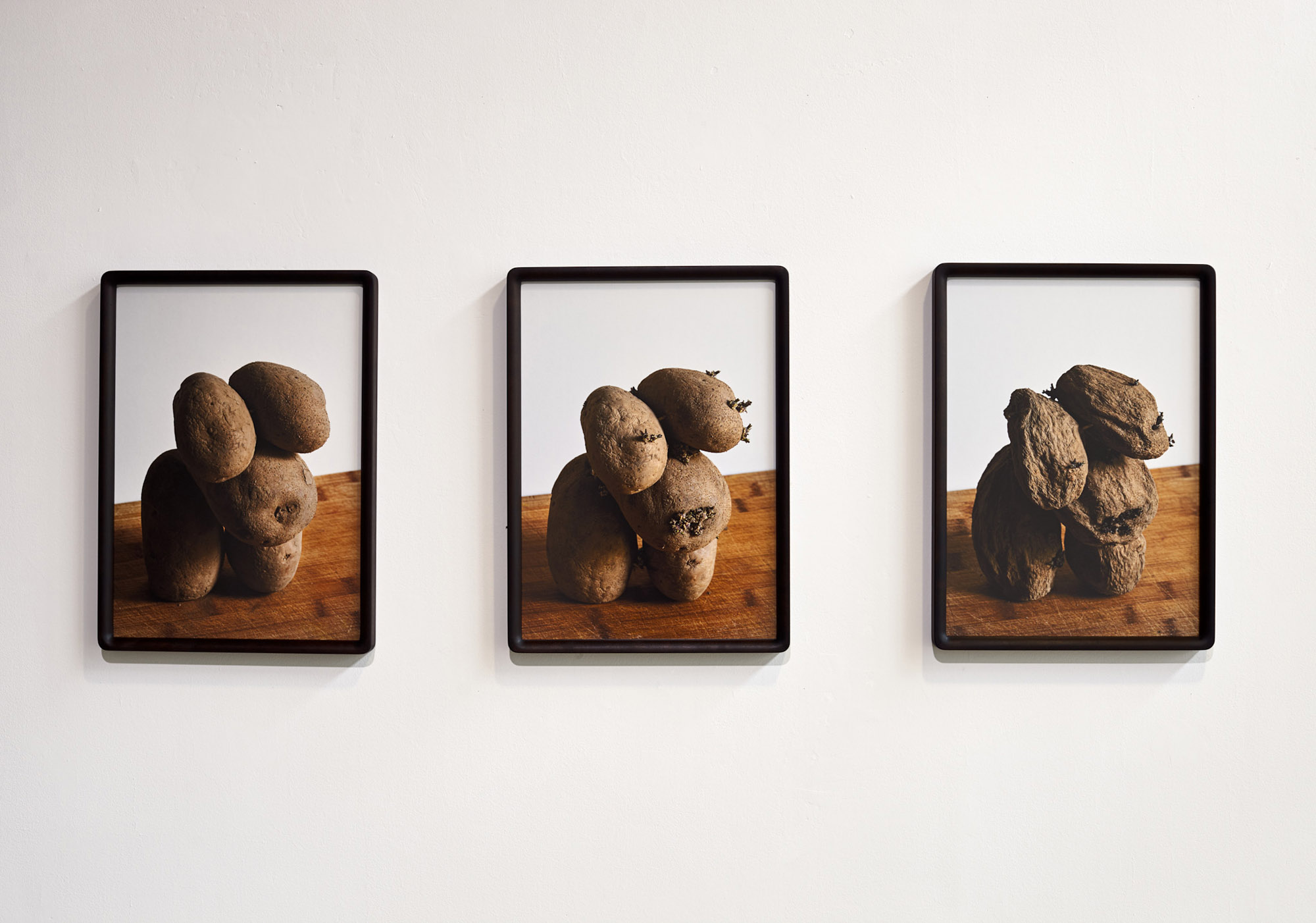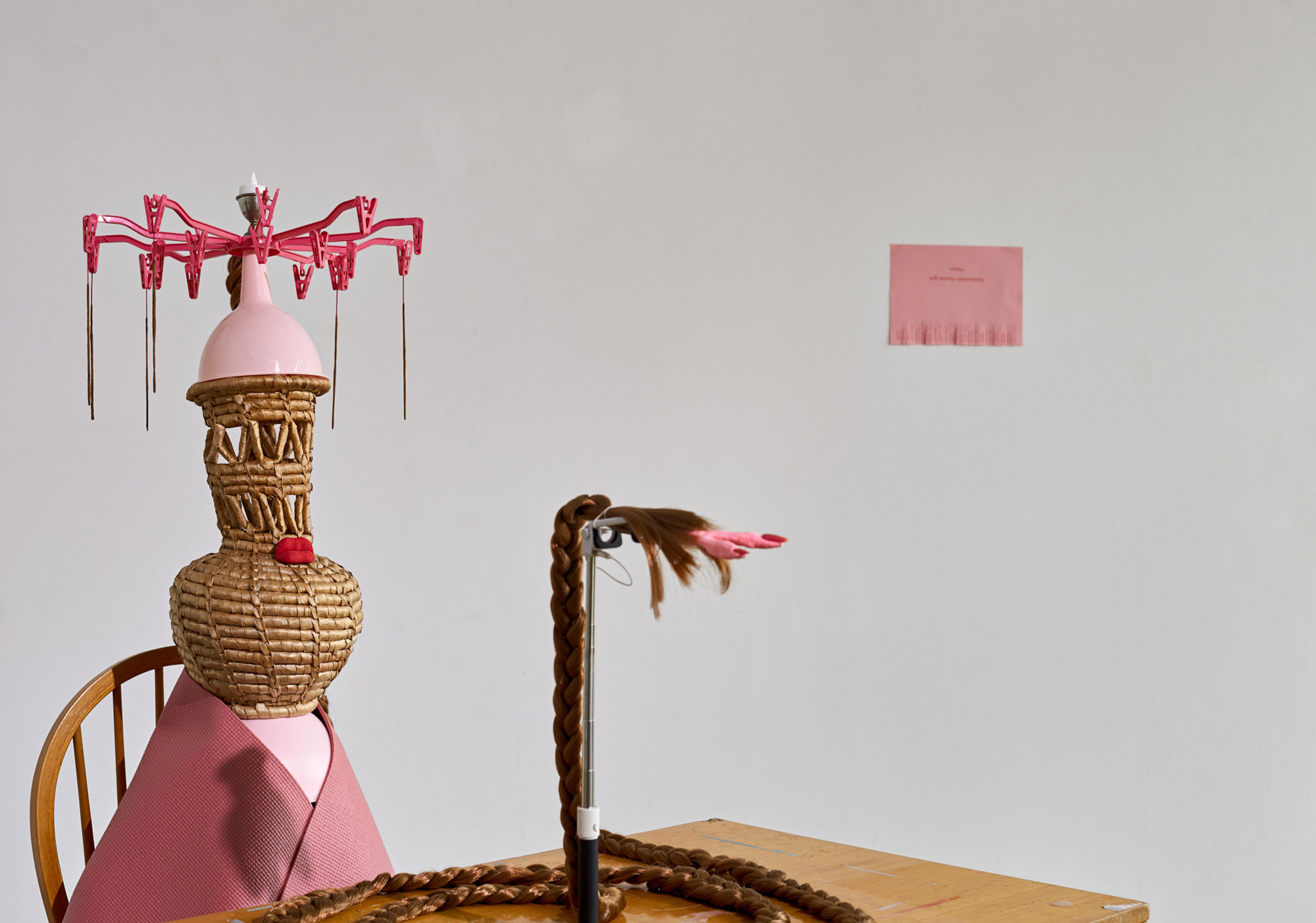Artists: Réka Lőrincz and Dorottya Vékony
Exhibition title: Everything is more than meets the mind
Curated by: Sonja Teszler
Venue: Torula, Győr, Hungary
Date: May 6 – June 3, 2023
Photography: Weber Áron / All images copyright and courtesy of the artists
Réka Lőrincz and Dorottya Vékony exhibition at Torula brings together works across photography, video, sound, sculpture, and installation that explore themes of collective care, productivity, birth, potential, and alternative systems of value. The exhibition presents an intimate dialogue between the artists’ personal perspectives, which are informed by their respective engagements with communities.
Vékony’s research on fertility and reproductive rights has led her to collaborate with various groups of women, delving into lasting taboos surrounding non-traditional family structures and childbearing practices, infertility, miscarriage, and abortion. Using photography, film and installation, her practice highlights ways of processing possible traumas within communities of mutual acceptance and care.
Her two-channel video work, Without Violence was created in collaboration with Márton Perlaki and shows recordings of people assuming various labor positions in a casting scenario, alongside archival footage of cavers navigating difficult, narrow subterranean routes. The work explores the potential of re-enactment, storytelling and performance to cultivate empathy and understanding. This twofold visual narrative is underscored by interviews with women describing the experience of labor, resulting in a playful and comical visual allegory for birth.
Vékony’s series of photographs, Venus of Potato, is an equally humorous depiction of three stages of the divine feminine potato figure, from sprouting to dying. The work reflects on the iconic representations of the female body throughout history and its connection to the notion of fertility, as well as the organic cycle of life and death within which all bodies (human and non-human) are embedded.
The large-scale ceramic fountain, Source of Care, and the sculpture Fertility 2.0 both stand as monuments to the idea of community. The fountain consists of ceramic breast moulds from various women close to Vékony – including her own and Lőrincz’s – and functions as a self-sustaining system that circulates the same body of water. Fertility 2.0, a series of life-sized free standing sculptures expand on Vékony’s previous two-dimensional photographs of women’s bodies entangled within various formations as a representation of collective care and support.
Meanwhile, Lőrincz’s work as an artist and professional energetic healer fuels her conceptually-driven practice, typically using and manipulating found objects – from money and fake nails to garden tools – into a personal symbolic vocabulary. Her installations and text-based works reflect critically on contemporary society’s fixation on productivity and material wealth, as well as the concept of agency.
Her sculpture, Personal Shaman, is a kind of self-portrait. The seated shaman figure has a woven vessel for a head with a long, snake-like braid – a symbol for wisdom -, its hot pink, manicured fingers held up by a selfie stick. Both playfully decorative and conceptual, this icon encapsulates the significance of non-linear forms of knowledge, spirituality, and healing in Lőrincz’s life and artistic practice.
The video work I Don’t Have Time to Hurry is a slow aerial-view pan of a text spelled out from large rocks on a field, gradually revealing the whole title. The labour-and time-consuming process of physically creating the work is echoed by the deliberately slow edit of the final product encountered by the viewer. As such, Lőrincz stages a multilayered intervention into the accelerated rhythm of contemporary culture along with its pillars of productivity and instant gratification. A similar, subversive response to the capitalist ideology is her work Energy; a series of interwoven 1 dollar notes, pointing to the entirely arbitrary and imaginary nature of the value we attribute to money.
Many of Lőrincz’s works ask for active participation from the viewer, such as the found object installation, Camping Spiritual Gate, acting as a kind of catalyst for conscious manifestation. The work instructs the participant to ‘focus on a wish’ as they pass through, and to then ‘enjoy all the things set in motion in their life by their thoughts prior to using the gate’ . As such, both Camping Spiritual Gate and Lőrincz’s other text-based neon work Possibility ≥ Reality address the exhibition’s central notion of agency. The works draw awareness to the power of our thoughts and the holistic embodiment of our own choices and potential in body, mind, and spirit.
Almost, a sound piece tucked away in Torula’s bathroom, is edited together from conversations between Lőrincz and Vékony about the themes collectively explored in the exhibition. Its placement is a humorous reflection on the quasi-‘marginal’ forms of knowledge that have historically fallen outside of the dominant canon.
Together, Lőrincz and Vékony’s works pose an essential cosmological challenge to the dominant capitalist worldview; instead of defining value in material terms and within the loop of limitless extraction, production and consumption, they draw our attention to alternative forms of knowledge, care and interrelation, inviting viewers to engage with this framework as a different way of shaping collective and individual consciousness, and to constantly question its limits and possibilities.
-Sonja Teszler



